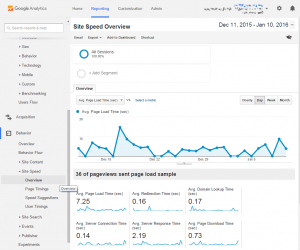
SEO marketing can be confusing. After all, when it comes to SEO there are a million things that you can do. From link building, to promoting content on social media, to keyword research, to competitive research, to building out landing pages, to internal link building, to producing content and everything in between.
With so many potential things that can be done, how do you decide what to do, and when to do it? It can be very confusing and without a certain level of clarity in your mind.
Because of this, it’s useful to break down all the things that can be done for SEO into three simple steps.
Step 1: Research.
Step 2: Onsite Optimization.
Step 3: Offsite Optimization.
I’ll explain each step with personal examples in further detail below.
Step 1: Research
Research will always be the top priority when it comes to SEO. Because research lays the foundation for your entire strategy. Without great research, you’re guaranteed to go in the wrong direction, right from the start.
In fact, I would argue that 90 percent of your success revolves around quality research around KW’s in your industry and even better competitive research targeting your top competition. In other words, your road to SEO success is paved before you start implementing anything.
Personal Example: I consulted for an Australian camera rental shop. Their site was old, and a relic from the 90s (in the process of getting a redesign) and it was optimized for “camera rental” as that had the most searches on Google. Here is the problem, Australian’s say “camera hire” and are more likely to actually search for that. However, without doing the research, “camera rental” seemed like a much better KW to target to them. So not only were they going after a much more competitive KW, but if they would’ve ranked, it would have brought them less qualified traffic.
So I did some research and found that “camera hire” had decent traffic in Australia, and was mildly competitive but “Sydney Camera Hire” had almost just as much traffic and there was essentially no competition. So we rebuilt our foundation accordingly, and within a month results came pouring in.
This is the power of proper research.
How you can use this information: Keyword research can go deep, but the starting point is almost always Google’s adword tool. In order to gain access to the tool, you need to sign up for a free adwords account. Once you’ve done that, the tool is free and will get you started with your own keyword ideas.
Step 2: Onsite Optimization
After you’ve done proper research, it’s time to start making the right changes to your website that will communicate to the search engine what your site is all about.
Think about this as directly and properly telling Google what your pages are all about, and therefore what types of searches they are relevant for.
In other words, onsite optimization is all about relevancy: how to make a page relevant for a particular keyword.
Just like the research step, this step is also very powerful. Let me explain with another recent example I’ve encountered.
Personal Example: I began working with a plastic surgery startup in Utah that wanted to start attracting traffic for breast augmentation terms. After going through the research phase, we all agreed that the site needed target phrases like “breast augmentation Utah” as these phrases were clearly the profitable keywords they wanted to target. Obviously in order to make this happen, we needed to build out a site and have the site target optimized perfectly. Since the company is a startup, they wanted us to just throw a quick site up until it actually achieved some rankings. When this happened they would build out a new, more professional looking site. After just a few weeks of putting up the site, and optimizing it perfectly, it’s about to break the first page of Google for the phrases that matter to them.
This is the power of proper onsite optimization.
How you can use this information: Proper onsite optimization is fairly easy, yet outside the scope of this article. Go check out Moz’s “Beginner’s Guide to SEO” and get every detail on proper onsite optimization that you could ever need.
Step 3: Offsite Optimization
Okay, we’ve done the right research and created the right pages that have been optimized, now what?
Offsite optimization: a.k.a. link building.
Think about offsite optimization as indirectly telling Google what your pages are authoritative for. This is all about creating authority.
There are really only a couple ways to build authority to your website and they all involve links. You can link within your existing site, get links from other sites or get links from social media sites. It’s really all about links.
Let me explain with just how powerful link building actually is.
Personal Example: I recently built out a website for my dad’s geological consulting company. Of course, being an SEO guy I wanted to make sure that it ranked well for the phrases that would pay off for my dad. So obviously I followed my own 3-step process. I did the research, I optimized the pages, and….nothing. No rankings; not yet at least. I decided to start an active link building effort of the site. Within 1 month of putting a little dedicated effort, the site is now ranking very well for phrases that are generating leads. What did I do? I found anyway I could to get legitimate links going to the site! This is all Google needed to give me their trust.
How you can use this information: Building links can be a huge hassle and very time consuming. Generally, writing articles and getting them placed on industry relevant blogs and websites is the easiest and most powerful way to go about building the authority you need. Set a goal, reach out to every online publication you can think of and pitch them article ideas, and find a way to get a legitimate link within your content.
Conclusion
SEO can see confusing but it boils down to three simple steps. Do your research, optimize onsite (relevancy) and optimization offsite (authority). When each step is executed correctly, SEO results follow.
Hopefully you’ve been inspired to go out and SEO success a reality for your business. When you do it right, you won’t regret it, I promise.
(222)







